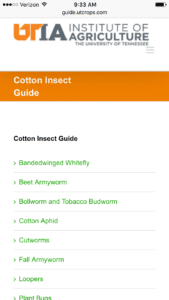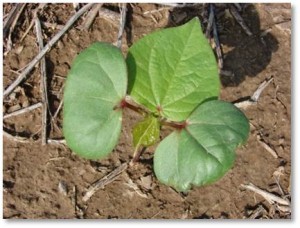Yesterday, I had the opportunity to visit some fields in Shelby County and had reports from a couple of other areas where armyworms have completely defoliated some wheat fields (or spots in fields). Armyworms were not hard to find, but many had pupated (“cycled out”) or were being killed by diseases and parasites. The good news is Continue reading
All posts by Scott Stewart, West TN Research & Education Center
Moth Trapping Data
This is a reminder that moth trapping data for corn earworm (bollworm), tobacco budworm, and southwestern corn borer will be posted weekly during the summer. You can open the Excel file under the Quick Link menu on the left or directly at this link – http://www.utcrops.com/BlogStuff/2017MothTrappingData.xls. A few southwestern corn borers were caught this week, indicating the first generation is starting, perhaps just a little earlier than usual. Generally low numbers of corn earworm and tobacco budworm moths were also caught last week.
True Armyworms in Wheat
This is a repeat of an older article … as a reminder. There have been a couple of reports of armyworms in wheat. Nothing crazy but much of the wheat is still in the milk stage and would be susceptible to excessive defoliation. Occasionally, armyworms may even cut the heads, typically when populations are high. Yield loss is most likley if Continue reading
Section 18 for Transform in Cotton, etc.
The EPA as once again approved the Section 18 application allowing the use of Transform WG to control tarnished plant bugs in cotton. Specific restrictions are listed below and essentially identical to last year. Continue reading
Cotton Scout School and New Cotton Insect App
The University of Tennessee Cotton Insect Scout School is scheduled for Friday, May 26 at the West Tennessee Research and Education Center in Jackson. Registration begins at 8:00 AM with the program starting at 8:30. Content will include hands-on training with an optional ‘go-to-the-field session’ after a box lunch. No fee of preregistration is required.
 A new web-based, mobile friendly Cotton Insect Field Guide is now available. Add this to the home page of your phone or tablet for app-like access to information on insect management including sampling methods, treatment thresholds, and insecticide selection. There are some also some good pictures. This guide (and others) can also be accessed from this news site. I hope add a similar resource for soybean by mid-summer.
A new web-based, mobile friendly Cotton Insect Field Guide is now available. Add this to the home page of your phone or tablet for app-like access to information on insect management including sampling methods, treatment thresholds, and insecticide selection. There are some also some good pictures. This guide (and others) can also be accessed from this news site. I hope add a similar resource for soybean by mid-summer.
Pest Management and Cover Crops
There is growing discussion and interest in the use of cover crops, mostly commonly in soybean but also in corn and cotton. Some of the benefits seem pretty intuitive and include improved control of erosion and the buildup of organic matter. Another obvious benefit is NRCS programs which pay growers to plant specified cover crops. Dr. Larry Steckel and his students have also shown benefits of cover crops in reducing the emergence of Palmer pigweed and some other weeds. However, having said all that, there are some concerns and unknowns about how cover crops might affect populations of soil and seedling pests. Continue reading
Sugarcane Aphid Tolerant Sorghum Hybrids
Although it appears grain sorghum acres will be quite low in Tennessee during 2017, a list of sorghum hybrids with tolerance to sugarcane aphid have been developed. You can access this list on the United Sorghum Checkoff Program website at the link below.
http://www.sorghumcheckoff.com/farmer-resources/grain-production/hybrid-selection Continue reading
Insecticide Seed Treatment Choices in Cotton
 As almost everyone knows, there are concerns about the consistency of neonicotinoid seed treatments in cotton because of resistance in populations of tobacco thrips. Also, label restrictions prevent tank mixing any insecticides with dicamba on XtendFlex cotton. Thus, those planning on growing dicamba tolerant varieties and spraying Engenia or XtendiMax (dicamba) will be especially concerned with at-planting thrips treatments that reduce the chances of needing a foliar application. Continue reading
As almost everyone knows, there are concerns about the consistency of neonicotinoid seed treatments in cotton because of resistance in populations of tobacco thrips. Also, label restrictions prevent tank mixing any insecticides with dicamba on XtendFlex cotton. Thus, those planning on growing dicamba tolerant varieties and spraying Engenia or XtendiMax (dicamba) will be especially concerned with at-planting thrips treatments that reduce the chances of needing a foliar application. Continue reading
